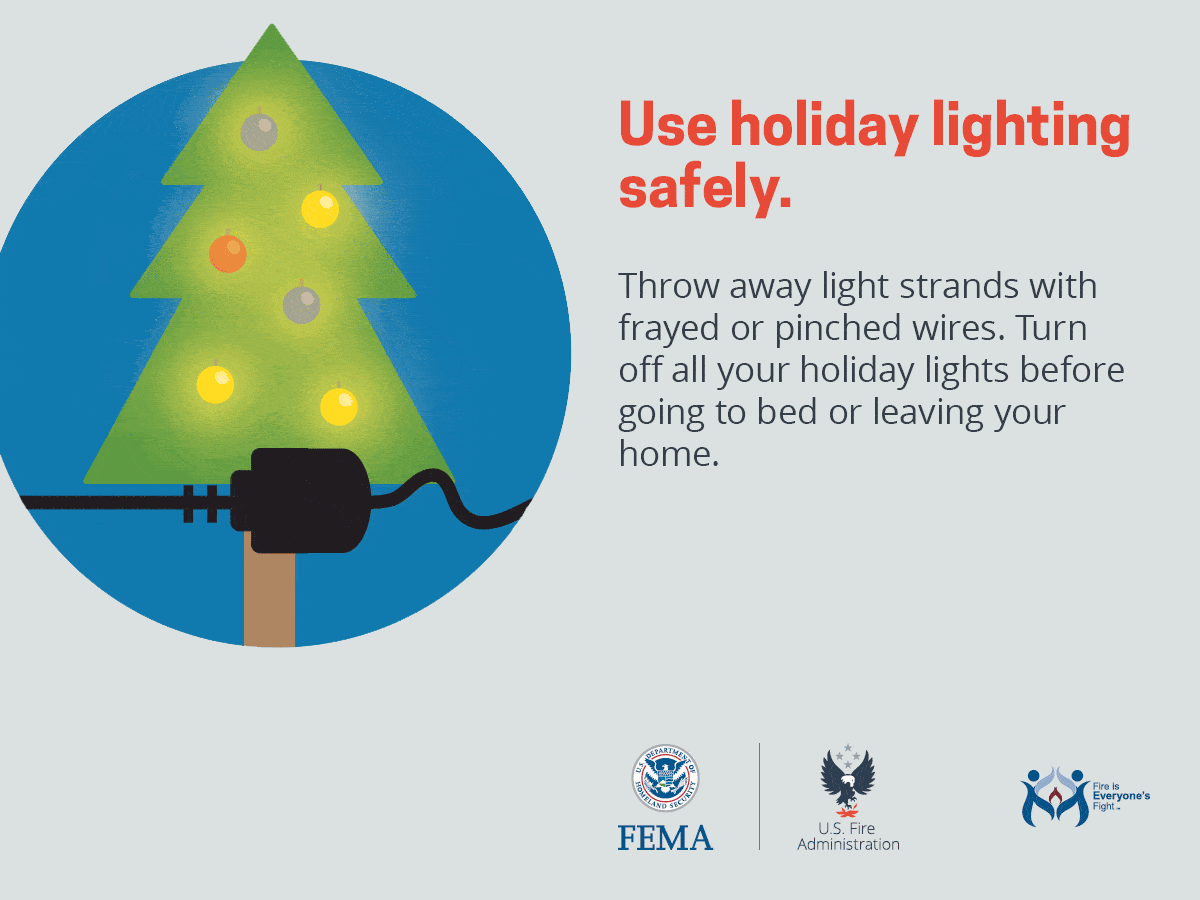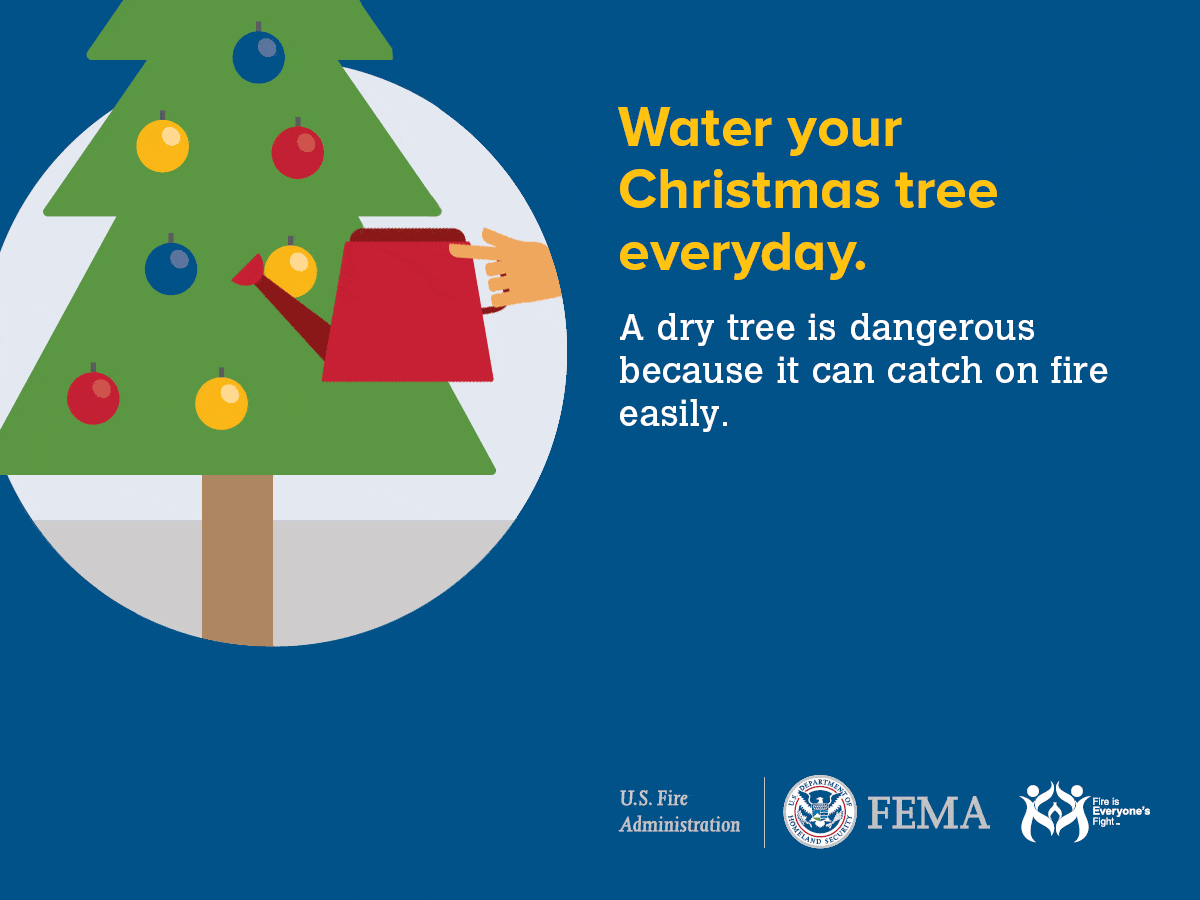

Holiday, Candle and Christmas Tree Fire Safety
Winter holiday fire facts
-
Electrical distribution or lighting equipment was involved in almost half of home Christmas tree fires.
-
Nearly one in five Christmas tree fires were started by decorative lights. Eight percent were started by candles.
-
Roughly two of every five home Christmas tree fires started in the living room.
-
Year round, more than one-third (35 percent) of home decoration fires were started by candles. This jumped to almost half in December when candles started 45 percent of such fires. Cooking started one-fifth (19%) of decoration fires.
Holiday decorations
-
U.S. fire departments responded to an estimated average of 790 home structure fires per year that began with decorations, excluding Christmas trees, in 2015-2019. These fires caused an annual average of one civilian fire death, 26 civilian fire injuries and $13 million in direct property damage.
-
One in five home decoration fires occurred in December.
-
The decoration was too close to a heat source such as a candle or equipment in more than two of every five incidents.
-
Year-round, more than one-third of home decoration fires were started by candles. Cooking started 19 percent of decoration fires, 12 percent involved electrical distribution and lighting equipment, heating equipment was involved in 11 percent, 8 percent were intentionally set, and smoking materials started 7 percent.
-
Candles caused 45 percent of home decoration fires in December.


Christmas Tree Safety

Christmas Tree Safety
Christmas trees account for hundreds of fires each year. Typically, shorts in electrical lights or open flames from candles, lighters or matches start tree fires. Well-watered trees are not a problem. A dry and neglected tree can be.
Carefully decorating your home can help make your holidays safer. Between 2015-2019, U.S. fire departments responded to an average of 160 home fires that started with Christmas trees per year. U.S. fire departments responded to an estimated average of 790 home structure fires per year that began with decorations, excluding Christmas trees.
As Christmas trees dry out, they become more and more flammable. Thirty percent of Christmas tree fires were in January. Although Christmas tree fires are not common, they can grow very fast.

Downloadable Resources
-
Winter Holiday Safety Tips
-
More Holiday Safety Tips



Candle Safety
Candle Safety
Candle fire facts
During the five-year period of 2015-2019:
-
Candles caused 2% of reported home fires, 3% of home fire deaths, 6% of home fire injuries, and 4% of the direct property damage in home fires.
-
Roughly one-third (37%) of home candle fires started in bedrooms. These fires caused 35% of the associated deaths and 47% of the associated injuries.
-
Falling asleep was a factor in 10% percent of the home candle fires and 12% of the associated deaths.
-
On average, 20 home candle fires were reported per day.
-
Three of every five (60%) of home candle fires occurred when some form of combustible material was left or came too close to the candle.
-
Candle fires peak in December and January with 11 percent of candles fires in each of these months.
Source: NFPA Research Division
The top three days of the year for home candle fires are Christmas, New Year’s Day, and New Year's Eve.
-
Place candles in a sturdy candleholder that will not tip over.
-
Never leave a burning candle alone.
-
Keep candles 12 inches away from things that can burn.
-
Think about using battery-operated flameless candle.




